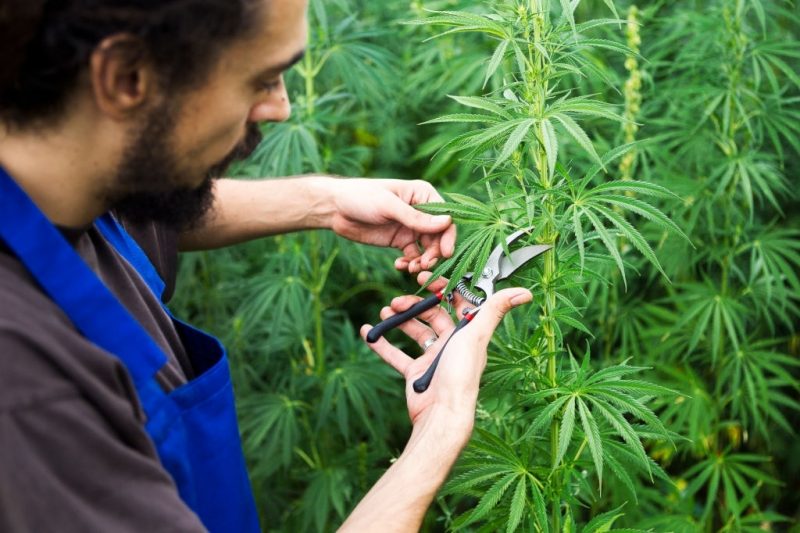🔥 Website for Sale - Contact Us
Cannabis defoliation is important for numerous reasons but it all boils down to either safeguarding crops or increasing the size and quality of flower yield. All these pruning reasons work together like links of chain and cause a cascadable effect that can destabilize plant growth and development. While maintaining a well optimized eco-system in a grow tent can be complex, it all starts with properly removing fan leaves during veg because it is the most effective way to lower humidity and temperature.
Removing fan leaves during veg (vegetation stage) is critical because it spreads out the defoliation process over many weeks instead of scrambling in the last available window of opportunity which can cause more harm than good. While it is common practice to remove fan leave up until the late flowering stage, there are multiple factors to consider to establish if it is the best possible route of action for your indoor crops.
In order to unpack this intricate topic, we need to take a step back to the beginning of the vegetation stage. First, we need to establish when is the perfect time to start removing fan leaves during the vegetation phase.
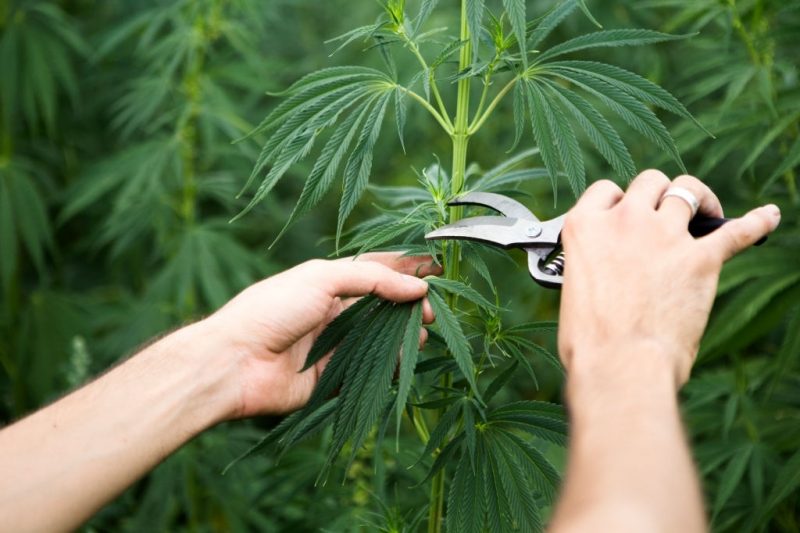
When to begin removing fan leaves during veg
One of the main reasons why cannabis plants are defoliated is to improve light penetration. Depending on the strain, cannabis tends to grow thick bush canopies because the fan leaves are all competing for the light which is the key building block for plant growth.
Cannabis plants use fan leaves similar to how houses depend on solar panels for electricity. While this is not the only purpose of fan leaves, photosynthesis is at the top of the most vital responsibilities. Apart from producing growth energy, defoliation also helps to optimize grow energy usage which ultimately gets refocused to flower production.
While defoliation results in fewer fan leaves to act as solar panels, the reduction of plant density exposes areas to light that otherwise won’t get any.
The ideal time to start removing fan leaves during veg is when your plants create a thick canopy. Although some strain grows quicker and thicker bushes than others, this is typical during weeks 2-4. This might be different for each crop, but the main takeaway point is the wait until the plant forms a thick bush because our aim is to primarily reduce plant density.
Why is removing fan leaves during veg important?
Although the are many reasons to defoliate your ladies during the vegetation stage, we’ll be looking at the top four reasons that impact cannabis health and flower production ability. While big fan leaves are a good sign, they can also cause tremendous problems in a to grow room because of their efficiency.
Next, we are looking at the four main reasons why removing fan leaves is important and how it impacts flower development.
1. Lower Humidity and Temperature
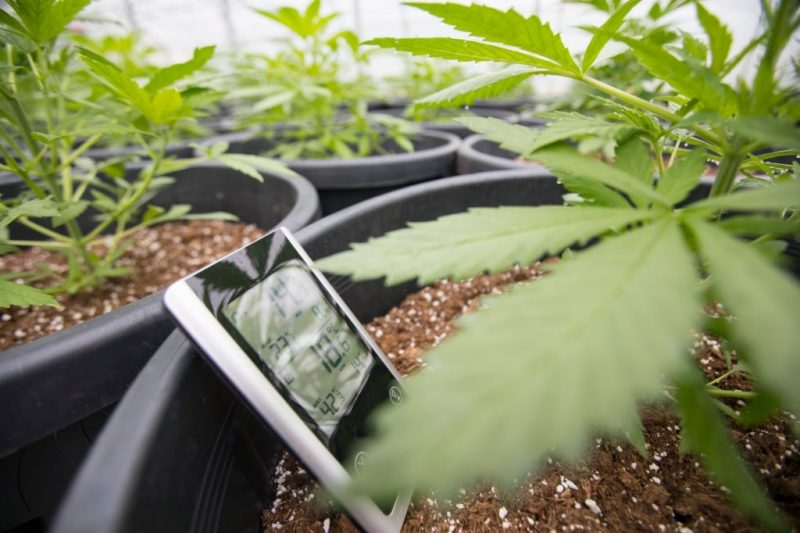
Eco-system climate stability is one of the most important factors when it comes to flower development and plant health. Temperature and humidity are directly dependant on each other and can be calculated and predicted with the “Relative humidity” principle.
“Relative humidity” is the idea that warmer air can hold much more moisture the cooler air. As a result, 70% humidity on a cold winter’s day carries less moisture compared to 70% humidity on a warm summer’s day. This same principle applies in a grow room and is tremendously useful when diagnosing climate-related problems.
During the nighttime, plants halt photogenesis and start to breathe similarly to humans. Using tiny sposes located on fan leaves, they absorb oxygen and expels carbon dioxide which is a big contributor to rising temperature and humidity in grow rooms. Carbon dioxide in a grow tent results in similar climate conditions caused by global warming.
This process, also known as plant transpiration is responsible for more life-supporting functions and ultimately plays a massive role in cooling down the plant’s internal temperature. The efficiency of plant transpiration greatly depends on the atmospheric climate meaning that if “Relative humidity” is out of control in your grow room, flower development will suffer.
The most effective way to lower humidity in a grow tent is by removing fan leaves during veg to slow carbon dioxide production during night times.
2. Increase Ventilation airflow in grow room
Proper ventilation and airflow play an important role when it comes to lowering the humidity in a grow tent. Removing fan leave that receives little to no light opens up space for air to move freely throughout the grow room. While a slight breeze inside a grow room can help to remove moisture from the air, it is also critical to help prevent moisture hot spots from forming between dense bushes that rub against each other.
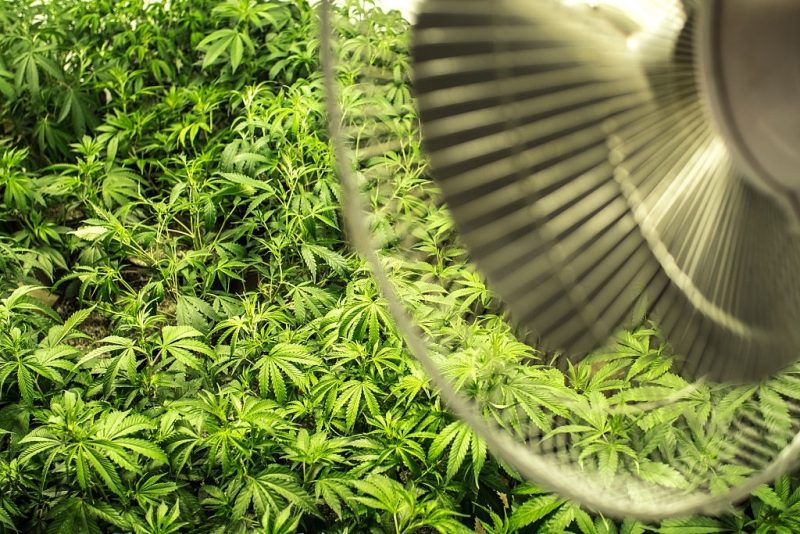
Stagnation moisture-rich hot air pockets amongst plant tissue are the perfect breeding grounds for plant diseases like mold and mildew. While fungus can be easily treated, doing it wrong or discovering the formation too late can result in the total annihilation of the flower crop.
The biggest concern when it comes to fungus diseases is that mold is not visible during the early stages of formation. Typically, mold starts to form on the inside of buds and only becomes visible to growers when it spreads to the outside of the flower. Once mold attack the buds, it is pretty much game over because smoking fungus-infected marijuana can be fatal. Apart from smoking, mold can become air-born and either infect more plants or find its way into people’s lungs and cause all sorts of health issues.
3. Improve Light penetration for flower production
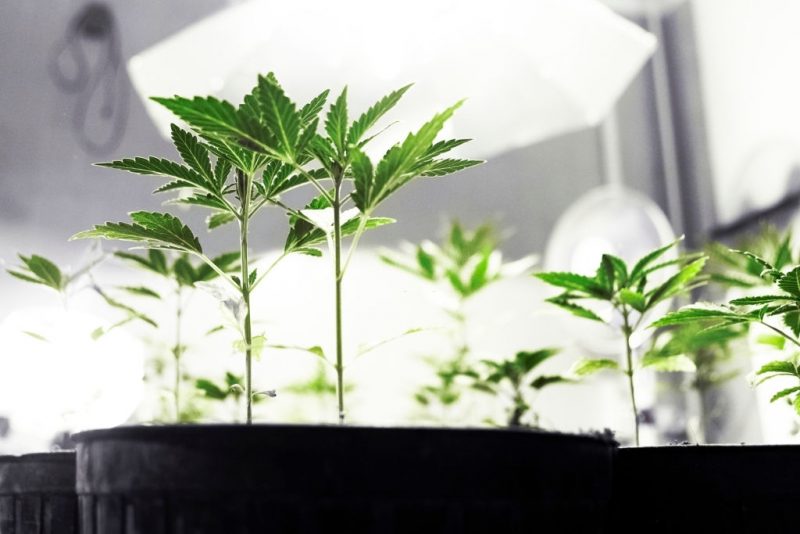
The main objective of removing fan leaves during veg boils down to the effectiveness of light distribution. Once cannabis enters into vegetation phase, most strains develop thick bushy canopies that prevent fan leaves on lower branches to get light exposure. The idea with defoliation is to remove leaves that spend precious plant growth energy and don’t contribute to flower development.
Apart from redirecting valuable grow energy away from flower development, it also can block light from reaching the entire plant. It is better to have fewer fan leaves that get proper light exposure than having a thick bush of fan leaves that is only 20% effective.
4. Optimize grow room real estate to lower cultivation cost
If you are growing cannabis from home or using grow room you are likely a victim of limited space. Defoliation of your ladies on a regular basis every 5-7 days can free up a tremendous amount of room. Typically, a defoliation session can remove anything between 40-60% of fan leaves which can shirk plants by two-thirds.
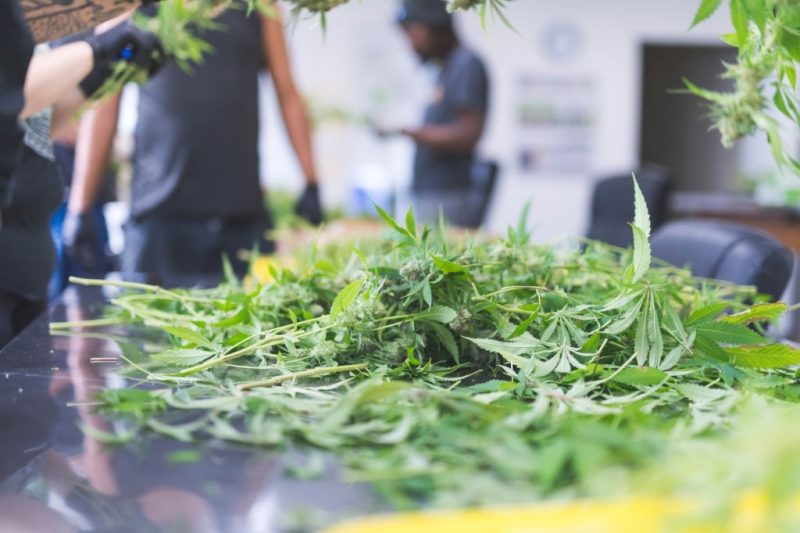
Once indoor growers install all the necessary equipment into grow room or tent, the available plant space is considerably reduced. In a small grow tent the equipment can easily claim one square foot that can result in less elbow room for your ladies. Properly defoliating your plants can free up enough space to either make plant maintenance practical or allow for one more plant in the grow cycle which ultimately lower cultivation cost.
Which fan leaves to remove during defoliation
Typically you are looking for fan leaves that are connected to the main stem with a node in close proximity. Search for fan leave that lives permanently under the plant’s shade and does not contribute in a meaningful way to flower development.
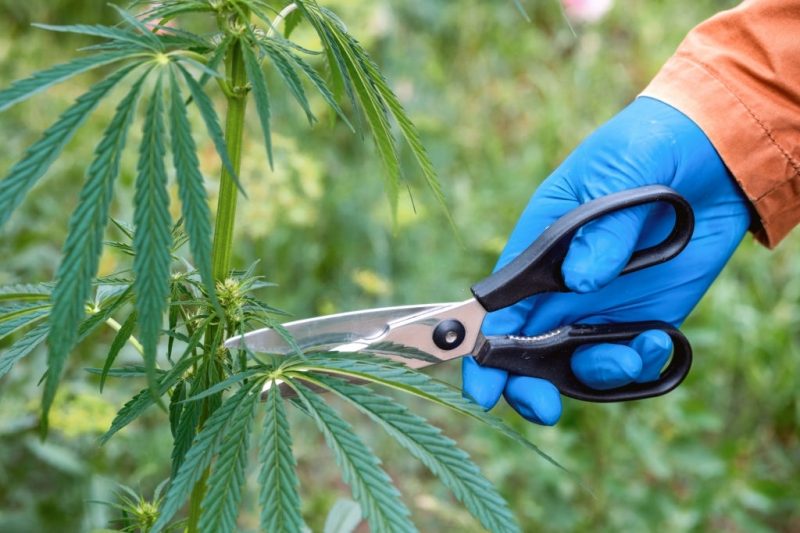
It is a good idea to spread out defoliation over long periods to prevent overwhelming the plant with wound injuries. Start trimming during the early stages of vegetation and continue up until the late flowering stage. Be careful not to overdo pruning because it can seriously stunt plant growth and ultimately negatively impact flower development. While cannabis plants are tremendously resilient, they are finicky when it comes to flower production.
Apart from stunted flower development, creating too many injuries to your female plant can send them into a tailspin trigger them to enter into survival mode. When cannabis plants feel that they are in a fight for survival from external stressors like an unfriendly climate or under physical attack, they’ll start to grow pollen sacs to attempt to fertilize them selfs.
This evolutionary response also known as hermaphroditism, redirects growth energy from flower development to grow pollen sacs. While there are methods to counter the plant response, it always results in poor flower quality and size. The crop harvest can still be smoked but its therapeutic value will be severely diminished.
Another reason why pruning should not be overdone is to lower the recovery time for the plant. Similar to humans, massive trauma to the plant will use all of the plant’s growth energy to recover and lead to underdeveloped flower buds.

